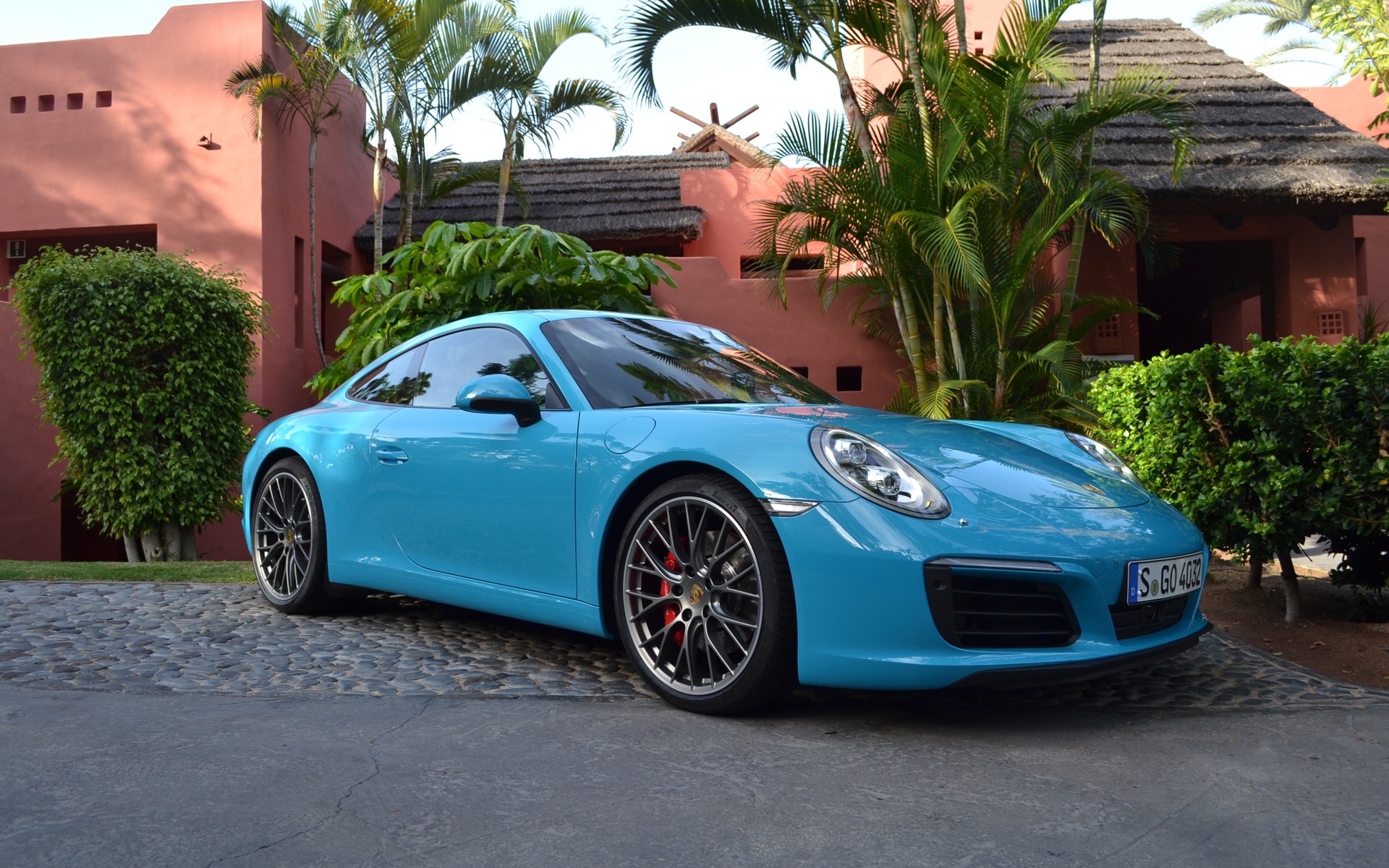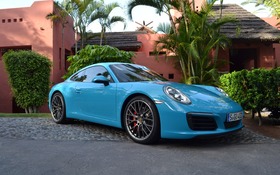2017 Porsche 911 Carrera: Entering The Turbocharged Era

| Strong points |
|
|---|---|
| Weak points |
|
The year 2016 marks the arrival of a new-generation Porsche 911, that iconic sports car created by the brand from Stuttgart. It gets some cosmetic revisions, but more importantly, a turbocharged engine in the Carrera, which had been equipped with a naturally aspirated engine since the very beginning. This philosophical change, for the sake of reduced emissions and improved fuel economy, will likely be a historical moment for the 2017 Porsche 911 Carrera.
Traditionally, it’s always the base and S versions, coupe and cabriolet, that Porsche launches first. The all-wheel drive Carrera 4 versions follow soon after, and then buyers get access to the plethora of other 911 editions, including the beastly Turbo and Turbo S. Note that the 911 Turbo will be the only one to officially wear a “turbo” badge, even if the others benefit from force-fed engines.
- Also: 2017 Porsche Macan GTS And 911 Carrera: We’re Driving Them This Week!
- Also: Here Is The 2017 Porsche 911 Carrera
How to spot it quickly?
When a new 911 is presented, the company usually talks about evolution rather than revolution. They start with the existing model and apply a few well-calculated brush strokes here and there in order to modernize the car. In no such case will the original DNA of the 911 be tampered with, and risk spoiling what’s been a winning recipe for decades. The car’s designers must certainly feel like lions in a cage with all that restraint! Fortunately, they have other models onto which they can let their creativity flow.
To identify the new 911, one must check out the rear hood’s intake grille. The bars are now lined up vertically instead of horizontally, inspired by the 911 Sport Classic that was introduced not too long ago. Otherwise, eagle-eyed folks will notice the new taillights and headlight clusters, two elements that are always redesigned. Oh, the door handles have also been tweaked.
Inside, the PCM infotainment system has been replaced with a new-generation unit, which benefits from a multipoint touchscreen. It receives many new features in addition to being easier to use. We like its bigger display screen and more legible characters. For the rest, the cockpit can be personalized in countless ways. We also like the seat belts that match the car’s paint colour as well as the RS sport seats, even if they offer virtually no adjustment settings.
More power thanks to turbocharging
At the heart of the 2017 911 Carrera is its new twin-turbo, 3.0L flat-six that develops 370 horsepower, and 420 in the S versions. In both cases, that’s a 20-hp jump compared to the old naturally aspirated, 3.4L engine. The bigger cavalry is obviously much appreciated, but the torque increase is what’s really noticeable. It peaks at a lower rev range while rising by 44 lb-ft in the Carrera, and 43 lb-ft in the Carrera S. No changes for the transmission choices; a six-speed manual is standard, but it’s hard not to recommend the double-clutch PDK gearbox, quicker and more enjoyable for daily driving.
Once we started the engine, we were pleased to realize that its sound didn’t lose any of its verve. That's even more true when opting for the Sport exhaust, which lets the notes flow more freely. However, from a stylistic standpoint, we prefer the normal exhaust system that includes two split pairs of tips instead of a central double outlet.
Even faster
While the designers had to restrain themselves, the engineers had all the latitude in order to increase the car’s performance. During our first drive, we discovered how they managed to improve a car that was already a performance benchmark.
The available power at low rpm is noticeable, especially when exiting corners as the car reaccelerates more responsively. Moreover, we were surprised to realize that the engineers succeeded in eliminating turbo lag, a concern prior to driving the car. Even at high altitude, the forced induction helped the engine keep all of its power, which we felt as we ascended the Mount Teide volcano in Tenerife. Porsche Active Suspension Management, one of the rare standard features, enhances the car’s cornering stability while lowering the chassis by 10 mm, resulting in a lower centre of gravity.
The other major novelty is the optional active rear steering system, borrowed from the 911 GT3. At high speeds, it facilitates entering curves by slightly pivoting the rear wheels, while reducing the car’s turning radius around town.
A few more dollars for a few less tenths
Obviously, the Carrera S, which sells for an extra $16,000 compared to the base version, offers a slightly more rewarding driving experience. Its higher output is made possible by turbo geometry modifications, a less restrictive exhaust and a few changes to the engine management computer.
All these improvements help shave 0.2 seconds from the 0-100 km/h sprint, reducing it to less than four seconds (3.9, to be precise) for the first time in a Carrera.
The Porsche 911 Carrera ($102,200) and Carrera S ($118,200) will hit showroom floors in a few months, costing slightly more than last year’s models. Porsche justifies this increase by offering more standard equipment.
Despite the reduced displacement and newfound turbocharging, in no way can we say that the new 911 isn’t superior to the outgoing one.











